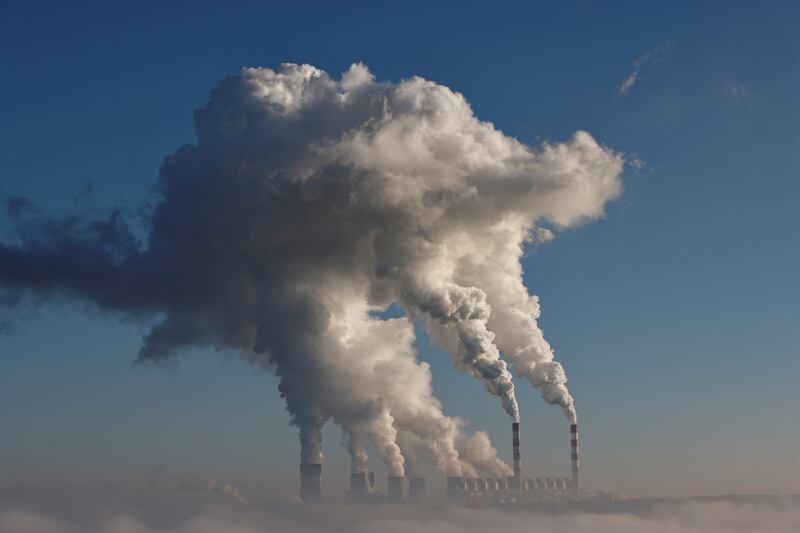Global energy demand grew by 1 per cent last year and fossil fuels made up nearly 82 per cent of the total supply – largely unchanged from 2021 – even as renewables advanced at a record pace, a report has said.
Solar and wind recorded their “largest ever” increase in new build capacity, reaching a record 12 per cent share of power generation in 2022, according to the Statistical Review of World Energy released on Monday.
Renewables – excluding hydropower – met 84 per cent of net electricity demand growth last year, the report said.
“Despite further strong growth in wind and solar in the power sector, overall global energy-related greenhouse gas emissions increased again,” said Juliet Davenport, president of Energy Institute, a UK-based industry body.
“We are still heading in the opposite direction to that required by the Paris Agreement.”
Russia’s invasion of Ukraine last year pushed natural gas prices to record levels, incentivising countries to increase the use of coal.
Europe has boosted its imports of liquefied natural gas from the US and Gulf countries to replace Russian supplies.
Global energy-related emissions grew by 0.8 per cent last year despite strong renewable energy adoption, the report said.
Demand for transport fuels continued to rebound across all geographies except China, where jet fuel consumption was significantly below pre-pandemic levels due to the country’s zero-Covid strategy, the report said.
China, the world's second-largest economy, is expected to be a key driver of crude oil and LNG demand in 2023 as it lifted Covid-19 restrictions earlier this year.
“All aspects of the trilemma were put under severe strain in 2022,” said Simon Virley, vice chair and head of energy and natural resources, KPMG, UK.
“Despite record growth in renewables, the share of world energy still coming from fossil fuels remains stubbornly stuck … which should act as a clarion call for governments to inject more urgency into the energy transition.”
Crude oil demand rose by 2.9 million barrels per day to 97.3 million bpd last year, a smaller increase when compared with 2020 numbers, the report said.
India and China emerged as main buyers of Russian crude oil last year after Western sanctions were imposed on Moscow’s energy exports.
Meanwhile, coal consumption increased by 0.6 per cent to reach its highest level since 2014, the report said.
Global oil demand growth is set to slow significantly by 2028 as high prices and supply concerns hasten the shift to cleaner energy, according to the International Energy Agency.
Based on current policies and market trends, crude demand will rise by 6 per cent between 2022 and 2028 to reach 105.7 million bpd, supported by strong demand from the petrochemical and aviation sectors, the Paris-based agency said in its medium-term oil market report earlier this month.
However, annual demand growth is expected to fall to 400,000 bpd in 2028 from 2.4 million bpd this year.
A record 295 gigawatts of renewable energy capacity was added around the world in 2022, up by about 10 per cent from the year before, according to the International Renewable Energy Agency.
Eighty-three per cent of all new capacity last year was produced by renewables, the Abu Dhabi-based agency said in its Renewable Capacity Statistics 2023 report released in March.













